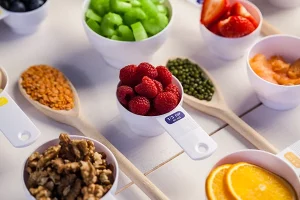If you’re selling food products in the United States, it’s essential to ensure that your packaging is compliant with the regulations set out by the Food and Drug Administration (FDA). One of the key requirements is to include a nutrition facts label on your products. Here are the steps you need to follow to create a compliant nutrition facts label in the US.
Step 1: Determine the Serving Size
The serving size is the amount of food that an average person would eat in one sitting. The FDA provides a list of reference amounts for common food items, which can be used as a starting point. If your product does not fit into one of the categories on the list, you’ll need to determine an appropriate serving size based on the weight or volume of your product. Two serving sizes appear on a nutrition fact label: metric and imperial.
Step 2: Calculate the Nutrient Content
The next step is to calculate the nutrient content of your product. You’ll need to determine the number of calories, fat, saturated fat, trans fat, cholesterol, sodium, carbohydrates, fiber, sugar, and protein per serving.
The FDA provides guidelines on how to calculate the nutrient content of packaged foods, including which nutrients are required to be listed and which ones are optional. You may also use a nutrition analysis software to calculate the nutrient content accurately.

Step 3: List the Ingredients
List all the ingredients in your product in descending order by weight. This means that the ingredient that weighs the most should be listed first, and the ingredient that weighs the least should be listed last. If your product contains any allergens, they must be declared.
Step 4: Include the Daily Values
The daily values (DV) are the recommended amounts of nutrients that an average person should consume in a day. The DVs are based on a 2,000 calorie diet and are provided on the nutrition facts label as a percentage. For example, if a product has 10% of the DV for fat, it means that one serving provides 10% of the recommended daily amount of fat.
Step 5: Ensure the Label is US Compliant
There are several other requirements that your nutrition facts label must meet to be compliant with FDA regulations. These include:
- The label must be easy to read and understand.
- The label must be placed in a prominent location on the packaging.
- The font size must be at least 8 points, and in a color that contrasts with the background.
- The label must include the statement “Percent Daily Values are based on a 2,000 calorie diet” at the bottom.
- The label must include the manufacturer’s name and address.
- The label must include the net weight or volume of the product.
Step 6: Review and Update the Label
It’s essential to review and update your nutrition facts label regularly to ensure that it remains compliant with the latest FDA regulations. This is particularly important if you make any changes to your product’s recipe or serving size.
In conclusion, creating a compliant nutrition facts label for your food products in the US is essential for meeting FDA regulations and ensuring that your customers can make informed decisions about what they eat. By following these steps and staying up to date with the latest guidelines, you can create a label that is accurate, informative, and compliant.
Creating an accurate label can be time consuming and confusing, even with the best of guides. If you need to generate several US compliant Nutrition Fact Labels, why not give MenuSano a try? Start a Free Trial today!



















